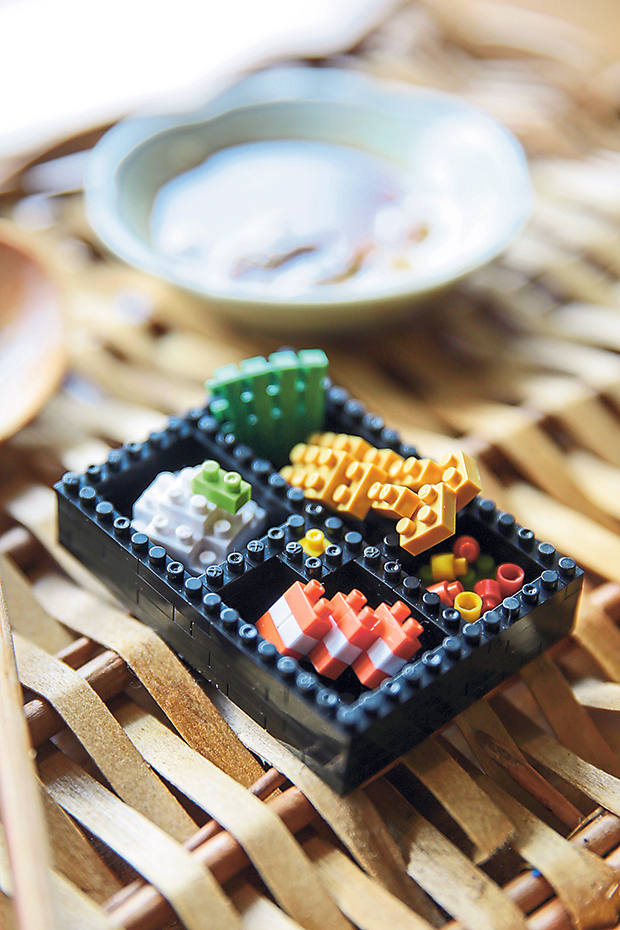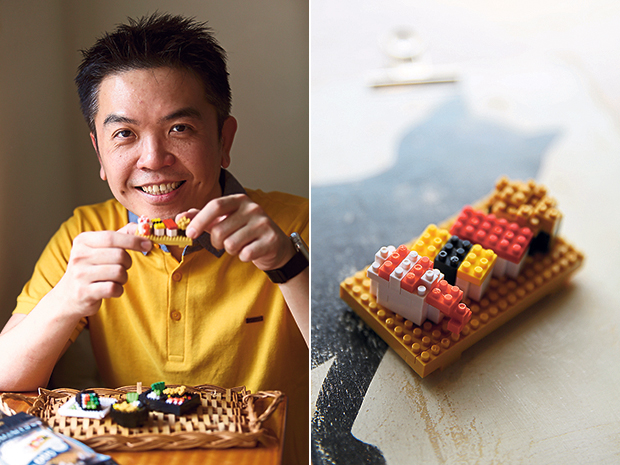KUALA LUMPUR, March 6 — You can almost imagine each type of sushi — ebi (prawn), tamago (egg), maguro (tuna) and uni (sea urchin). At least that’s what I came up with after Malaysian nano brick artist Christopher Tan showed me how to squint and guess what each piece was.
Why squint? Well, this sushi platter is made from “nano-sized” toy bricks, specifically nanoblock bricks by Japanese toy company Kawada. Tan is the first independent artist outside Japan to collaborate with Kawada to release his own designs as official nanoblock sets in Malaysia, Singapore and Indonesia.
For his first official nanoblock series, Tan created four specific Japanese foods — sushi, ramen, bento and temaki — in his nanoblock “kitchen”. Only 3,024 of each item is being released, making them instant collectibles for nanoblock fans worldwide. “I decided on these items because I love Japanese food. Also, I thought that these tiny nanoblock versions of popular Japanese food would look cute.”
Originally a software architect, Tan became a full-time nano brick artist in 2014. (The term “nano brick” is used to encompass other types of micro-sized toy bricks besides the Kawada-owned nanoblock brand.) He recalls, “It started as a hobby back in 2011, when nanoblock was first introduced outside Japan. As I started buying more nanoblock bricks, I also started creating my own designs that I shared on my Facebook page. From there, the number of fans grew and I also started getting corporate enquiries.”

Tan’s first big break came when East Point City mall in Hong Kong approached him to construct a large-scale nanoblock World Cup exhibition. “I designed and, with assistance from many Hong Kong nanoblock fans, built a 3-metre-square model city of Rio de Janeiro out of over 250,000 nanoblock bricks. It is the largest single nanoblock creation in the world.”
Becoming the first non-Japanese nanoblock designer was not without its challenges. According to Tan, it took quite a bit of convincing before Kawada agreed to his proposal. “As a Japanese company, they were still quite conservative and not that keen on a non-Japanese designer, especially for something as Japanese such as sushi and ramen. I had to travel to Tokyo twice on my own expense to pitch to them.”
Fortunately, thanks to support from nanoblock distributors in Malaysia, Singapore and Indonesia, as well as his large fan base (over 52,000 likes on Facebook), Kawada finally said yes. In total, it took Tan 18 months from the conception till his creations were released to the market.

“It didn’t take very long to come up with these four particular designs, just a few days,” says Tan. “Nonetheless, the entire process to get this product line out took longer because my initial designs were larger and required more bricks. Ultimately, it was decided that I need to make them smaller so that they fit the nanoblock mini-series and hit a lower price point for our market.”
Where toy bricks are concerned, most Malaysians would recognise the age-old favourite Lego more readily. However, Tan notes that Lego and nanoblock are quite different conceptually. “Though both are building blocks, Lego was designed for playability while nanoblock is more like a raw material for building 3D sculptures. So after you build them, you can play and interact with a Lego creation while you will put a nanoblock creation aside for display.”
Tan also feels that nanoblock’s unique advantage is how small the bricks are. He explains, “Because of their tiny size, I can build highly detailed designs. Take my nanoblock Oscar statuette: It’s life-size, and uses 1,500 plus bricks. To build the same thing in Lego with the same level of detail, it would need to be many times bigger. Or if you were to build a Lego version at the same size, it would have very little detail.”

Many would assume being a nano brick artist is plenty of fun then. Not so, cautions Tan. “A lot of people look at what I do and think I just sit and play with nano bricks all day. In fact, I have to research, looking up photographs of the subject matter from several different angles, so that I can visualise how it would look like in 3D before building. For more complex designs, I also do prototyping to find the best way to design certain parts first. There’s also the mundane work of tearing down prototyped designs and sorting bricks. It’s not always so exciting.”
If I am designing something to scale, like an architectural piece, there is also some additional work like researching the actual dimensions of the building, then doing some maths to scale all the different parts of the building down accordingly.
In the future, Tan will be focusing more on corporate business projects where he designs according to his client’s specific needs. He says, “I recently collaborated with Sasa, for whom I designed two beauty product nano brick items for their upcoming anniversary, and also with a South Korean baseball team, for whom I designed their home stadium, mascot and their top four players in nano brick.”
Whatever Tan designs, he promises each nano brick creation will be a labour of love. After all, he’s a nano brick fan first and foremost.
The nanoblock Japanese Food series is available now at Kinokuniya, Aeon, Toys R Us, Isetan and other stockists. Discover more at www.christan.design and www.facebook.com/christan






















